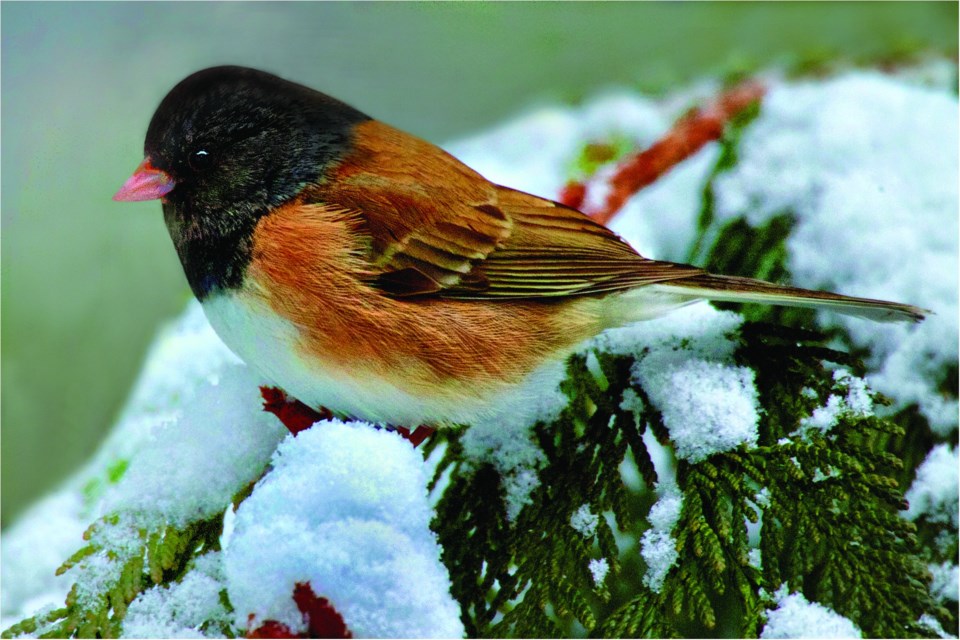Now is a great time to get better acquainted with the birds you might see every day but may not really notice.
The Christmas Bird Count (CBC) has been going on in Whistler for 28 years and is an important event. It is a part of a much larger study to assess long-term trends in early winter bird populations of North and Central America. If scientists see changes in trends, then there’s definitely something to investigate.
The Whistler Naturalists rely on volunteers in the community to help count our Christmas birds. On Dec. 14 you can help by joining a free birding field trip or by counting on your own. Email us what birds you saw, how many and where you saw them to WhistlerNaturalists@gmail.com.
We’ve developed a couple of resources to help you out compiled from 28 years of CBC data: “The Top 12 Christmas Birds” with photos is a great place to start.
Can you guess what they might be? They are the bald eagle, flicker (woodpecker), Steller’s jay, crow, raven, red-breasted nuthatch, black-capped chickadee, chestnut-backed chickadee, golden-crowned kinglet, song sparrow, junco and towhee. So, if you know four or more birds on this list, you are more of a birder than you may think!
The other resource we put together is a “Whistler Christmas Bird List.” It’s a list of 109 birds (a sub-set of the full Whistler Bird List of 261 species) and you can see how many times each bird has been spotted in 28 years of the CBC. Both resources are available at WhistlerNaturalists.ca.
For me, there were some surprises on the Whistler Christmas Bird List. Robins, for example, were spotted in 11 years of the CBC. Don’t they fly south for the winter? Well, as Shawn Mason told me, as long as they have enough food, they’ll stick around. And the warmer it is, the less food they need to keep warm, so temperature also plays a role.
Another surprise was that the varied thrush, cousin to the robin, has been spotted in 80 per cent of the CBCs. The varied thrush call is a “sign of spring” to many of us. It’s that long, single pitch, song—mainly in the morning and the evening. So it turns out, while the call of the varied thrush is a “sign of spring” (when it’s defending its territory), the actual bird is not.
Another great resource is the free Merlin Bird ID app from the Cornell Lab of Ornithology. Among other fun things it can do, it can also look at a photo of a bird and tell you what it is with surprising accuracy.
This is the 20th and final year Karl Ricker has organized the count. The Naturalists would like to send huge thanks to Karl for leading this important event and sharing his wealth of knowledge with the Whistler community.
Please send us your sightings on Dec. 14. For more information, visit WhistlerNaturalists.ca or email Kristina at WhistlerNaturalists@gmail.com.




